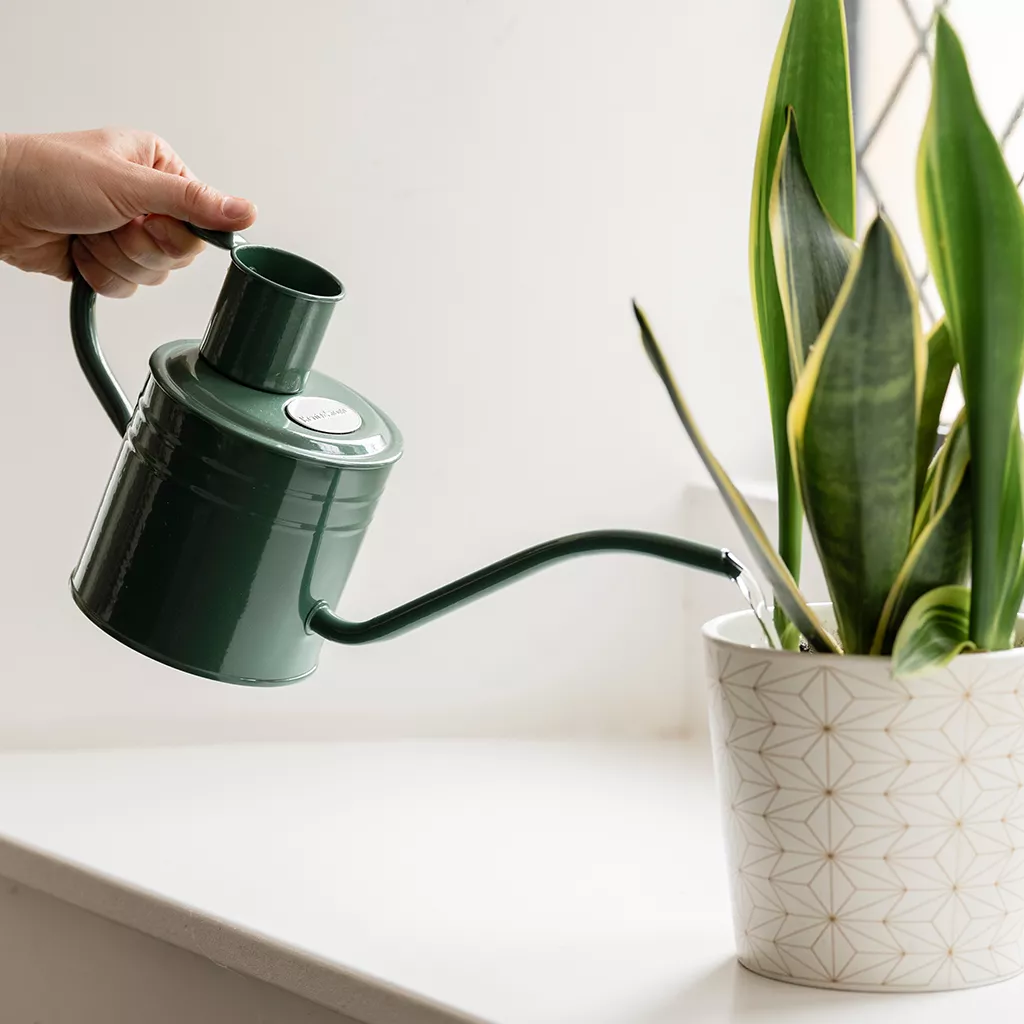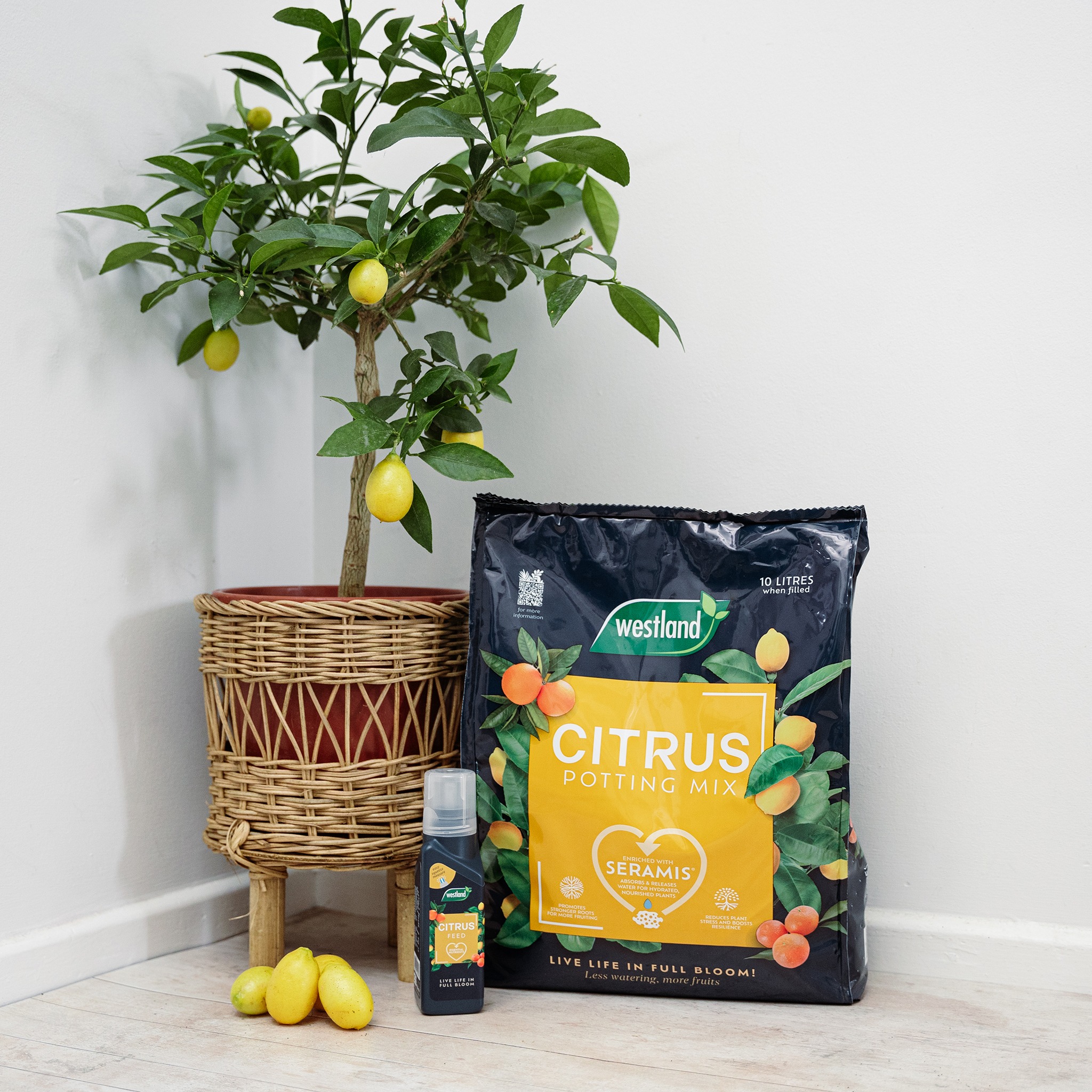Orange plants and other citrus plants can make a beautiful houseplant for your home. They bring brilliant colour and scent to your home, with the flowers and fruit they produce. As long as the basic factors are met, caring for a citrus plant is relatively easily. Follow our top tips on how to care for an orange tree to produce a healthy plant with some healthy fruit.
Temperature, Light and Humidity
Citrus plants are good to grow as a houseplant because they thrive in the stable warmth that is provided indoors. Citrus plants grow best with temperatures at 18°C during the day, and between 5°C and 10°C at night. In summer, these houseplants can be moved outdoors once the risk of frost has passed. However, as soon as it becomes cold they need to be moved indoors. Also, some citrus plants are more fragile than others. For example, lemon trees can tolerate temperatures down to 5°C, whereas limes can only tolerate temperatures down to 10°C and Calamondin oranges only 13°C. Depending on the type of citrus plant, determine when or if you should move it outdoors in the summer, based on this information.
Light is also very important for citrus plants. For the best growing citrus plant, the plant needs at least 5 to 6 hours a day of direct sunlight. Try placing your plant on a south-facing window sill as this seems to provide the right amount of light.
Citrus plants like quite humid environments. Try to place the plant in a room which is naturally humid, such as a bathroom or kitchen. You can also place the plant on pebble trays and mist the leaves as this helps to raise the humidity. Misting the leaves helps keep them cool and encourages pollination of flowers.
Watering
Citrus plants require a very similar watering regime as any other houseplant. In the winter, allow the soil to dry out between watering, as they do not like overwatering. However, in the summer, they need to be watered more regularly, possibly once or twice a week. Ideally water with rainwater if available. Westland’s Houseplant Watering Indicator is a great way to monitor whether your orange tree needs watering or not. Use a indoor watering can to water your orange tree that has a long stem spout for targeted watering.

Feeding
Citrus plants are hungry plants and need regular feeding during the growing season (spring and summer). In this growing period it is best to feed the plants every second watering. They should be fed with a high potassium feed to produce good fruit. We advise Westland Citrus feed as it boosts fruit set.
- Feed every second watering during the growing season (Spring/Summer)
- In winter, use every fourth watering as citrus plants will require fewer nutrients
- Avoid overdosing and applying to foliage

Repotting
If your orange tree needs repotting into a larger pot or container, this is best done in the spring time before they start active growth but they can be potted on any time during the summer. Use a specialist citrus compost like Westland Peat Free Citrus Potting Mix that has free drainage and the perfect balance of nutrients for healthy citrus plants.
- Choose a pot larger than the old one, ensuring it has adequate drainage holes
- Cover the base of the pot with crocks to ensure good drainage
- Place a layer of potting mix in the bottom of the pot and gently tap the old plant from it’s pot
- Fill in around the edges with more Citrus Potting Mix ensuring the top feeder roots are covered with 2cm of fresh potting mix
- Water well and keep in light shade for a few weeks to allow roots to grow
Pruning
Citrus plants do not need a lot of attention when it comes to pruning. If the plant has overcrowded branches, thin these out in February. Throughout the growing season, cut back the tallest branches to encourage bushy growth.
How to care for problems with your orange tree
Citrus plants like an orange tree are generally easy to care for, however they can have some problems…
Yellowing of leaves
This could mean your orange tree has too wet or dry soil, or is situated near a draught or in a too cold temperature. It could also mean it is not getting enough nutrients and not being fed enough.
Falling leaves
This could be due to draughts or too high or low temperatures. It could also mean the plant is getting too much water during the winter months. Citrus trees like a rest during this time.
No flowering
If your orange tree fails to produce any flowers, this could be due to a number of reasons. If it doesn’t have enough light or enough feed this could cause the plant to not produce any flowers. It could also be due to a low temperature or erratic watering.
Flowers fall before any fruit
If your orange tree flowers fall before there is any fruit, this could mean the roots are too dry or the air isn’t humid enough for the fruit to set.
To find out more on common houseplant problems and how to deal with them watch our helpful video below.




